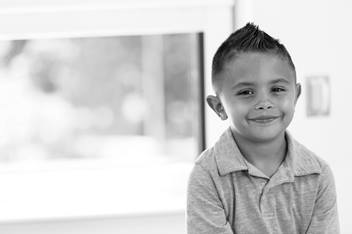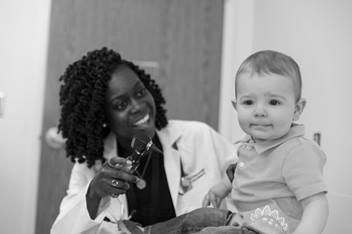Supporting Family Financial Stability

As the Healthy Neighborhoods Healthy Families initiative at Nationwide Children’s works to address concerns like stable housing and educational opportunity, it is also accelerating its efforts to get at a more basic concern: poverty.
The initiative’s career development and free tax preparation programs have made a difference for hundreds over the last five years. Now a newly launched program, My Bridge 2 Success, is supporting adults in their goals of becoming more economically mobile, and even providing funds for families to overcome the obstacles that are in their way. Those funds can be put toward a vehicle, tuition, or any number of other “bridges” that could ultimately break a family out of poverty.
“Poverty itself really affects a person’s ability to move ahead and get out of poverty,” says Sam Ricks, an Economic Opportunity project manager at Healthy Neighborhoods Healthy Families. “What My Bridge 2 Success is doing is helping people understand what is preventing them from reaching self-sufficiency, working with them to problem solve, and then providing resources that can help.”
My Bridge 2 Success is based on the nonprofit Economic Mobility Pathways (EMPath) model. A person from the Linden or South Side neighborhoods who is living near or below the poverty line is linked with a Nationwide Children’s mentor. The mentor partners with the person in self-diagnoses and goal-setting exercises, says Ricks.
“Where are you in your life? Is a credit score a problem? Do you have a savings account? Would a car allow you to drop your children off at school and get to work?” asks Ricks. “We can have an impact on all of that.”
The hospital works with long-time partner First Service Federal Credit Union to set up an account, and once a clear goal is outlined – like the purchase of a vehicle – money is deposited in that account for that goal. It’s called a “matched savings” because the funds are matched to the goal, and there is an accountability process to ensure that’s how the money is used, Ricks says.
While much of Bridge 2 Success does follow the EMPath plan, the matched savings portion is unique to Nationwide Children’s.
In its first year of operation, Bridge 2 Success has started slowly and deliberately. The participants must come from the Healthy Neighborhoods Healthy Families zone and meet income requirements. They are largely identified through the hospital and community partners, and some have already been part of Healthy Neighborhoods Healthy Families. The program can work with 30 individuals at one time, Ricks says.
Ricks and his colleagues hope to continue developing the program in this first year, with an eye toward expanding its impact in the future.
“We know people need some support with these basic financial life tasks, and we want to remove as many obstacles for them as we can,” he says.
“Poverty itself really affects a person’s ability to move ahead and get out of poverty. What My Bridge 2 Success is doing is helping people understand what is preventing them from reaching self-sufficiency, working with them to problem solve, and then providing resources that can help.”



